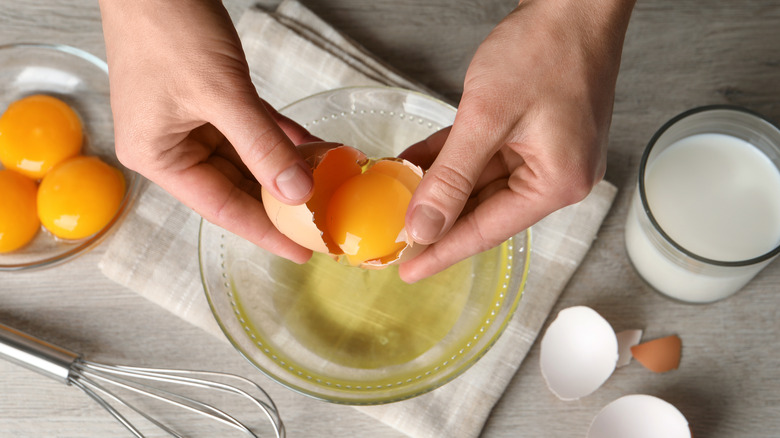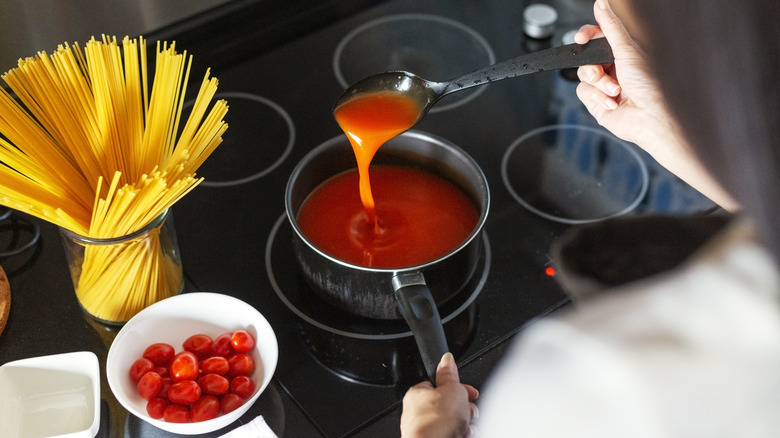The Egg Carton Hack That Will Extend The Life Of Your Leftover Sauce
While recycling entails existing materials and turning them into new items, upcycling involves repurposing an item to give it a new use. When it comes to the ubiquitous egg cartons in your kitchen, this packaging can gain a second life as a convenient storage method for all types of sauce, from pesto to marinara. This hack not only benefits the environment but also helps you create single-serving portions of sauce that can be enjoyed during subsequent dinners.
After cooking, once the sauce has cooled, pour portions of it into your egg carton and stick it in the freezer with some type of covering. Once the sauce portions are solid, pop them out of the carton and place them in a freezer-safe plastic bag for future use. While you can't deny the convenience of this effective hack, there are some concerns to consider when reusing packaging that once housed raw eggs.
Do egg cartons pose a risk of contamination?
The egg carton sauce hack isn't without controversy. As illustrated by this Reddit thread, commenters rightly bring up concerns about using repurposed egg cartons for food storage. Raw eggs can sometimes harbor salmonella, and there's a risk that the bacteria may transfer to your sauce, which may result in a significant bout of illness. While the FDA requires egg producers to take steps to reduce salmonella contamination, contamination of egg cartons can happen at home as you handle raw eggs. That's why the USDA Food Safety and Inspection Service urges people to forgo reusing meat and egg packages for other purposes, such as storage.
Based on these concerns, you should proceed with caution, especially if you or a loved one has a compromised immune system. You can always use a dedicated ice cube or muffin tray for single-serving sauce storage. Ensuring that sauce is reheated properly is also crucial for killing salmonella and other bacteria. In this case, the FSIS recommends reheating sauce via boiling and ensuring it reaches temperatures of at least 165 degrees Fahrenheit. You're also encouraged to use safe practices when thawing sauces before reheating.
Tips for defrosting frozen sauce
Regardless of the storage method you use, you must thaw frozen food in a safe manner. Accordingly, the FSIS recommends three safe defrosting methods on its freezing and food safety page. Defrosting sauce in the refrigerator overnight is the best approach, as the chilly temperatures inside the fridge will inhibit bacterial growth. Submerging the sauce bag in cold water is also effective, provided you reheat the sauce immediately after thawing. If you use the cold-water trick, be sure the bag is airtight and replace cold water with new water every half hour.
The last defrosting method involves your microwave, which is obviously much more expedient than your other options. To thaw sauce cubes, place them in a bowl and heat inside the microwave until melted. Similar to cold water thawing, defrosted sauce should be used immediately after thawing to ensure optimum food safety. With these tips, you can blend convenience and food safety in your kitchen for the best possible results.


